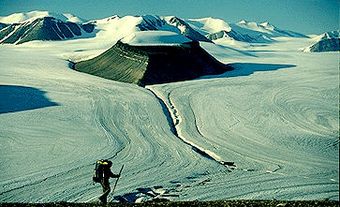Strait of Anian, part of the legendary Northwest Passage linking the Atlantic and Pacific oceans, likely Bering Strait. The name probably originated with Ania, a Chinese province mentioned in a 1559 edition of Marco Polo's book; it first appears on a map issued by Italian cartographer Giacomo Gastaldi about 1562. Five years later Bolognini Zaltieri issued a map showing a narrow and crooked Strait of Anian separating Asia from America. The strait grew in European imagination as an easy sea-lane linking Europe with the residence of the Great Khan in Cathay (northern China).
Voyages by John Cabot, Corte-Real, Jacques Cartier and Sir Humphrey Gilbert were motivated by its supposed existence, and cartographers and seamen tried to demonstrate its reality. Sir Francis Drake sought the western entrance in 1579. The Greek pilot Juan de Fuca claimed he had sailed the strait from the Pacific to the North Sea and back in 1592. The Spaniard Bartholomew de Fonte (who, some scholars have stated, was fictitious) claimed to have sailed from Hudson Bay to the Pacific via the strait in 1640. James Cook dispelled rumours of its existence in 1778 during his third Pacific voyage. The myth was finally destroyed by George Vancouver 1792-94, and by Alexander Mackenzie in his journeys to the Arctic and Pacific oceans in 1789 and 1793, respectively.

 Share on Facebook
Share on Facebook Share on X
Share on X Share by Email
Share by Email Share on Google Classroom
Share on Google Classroom


